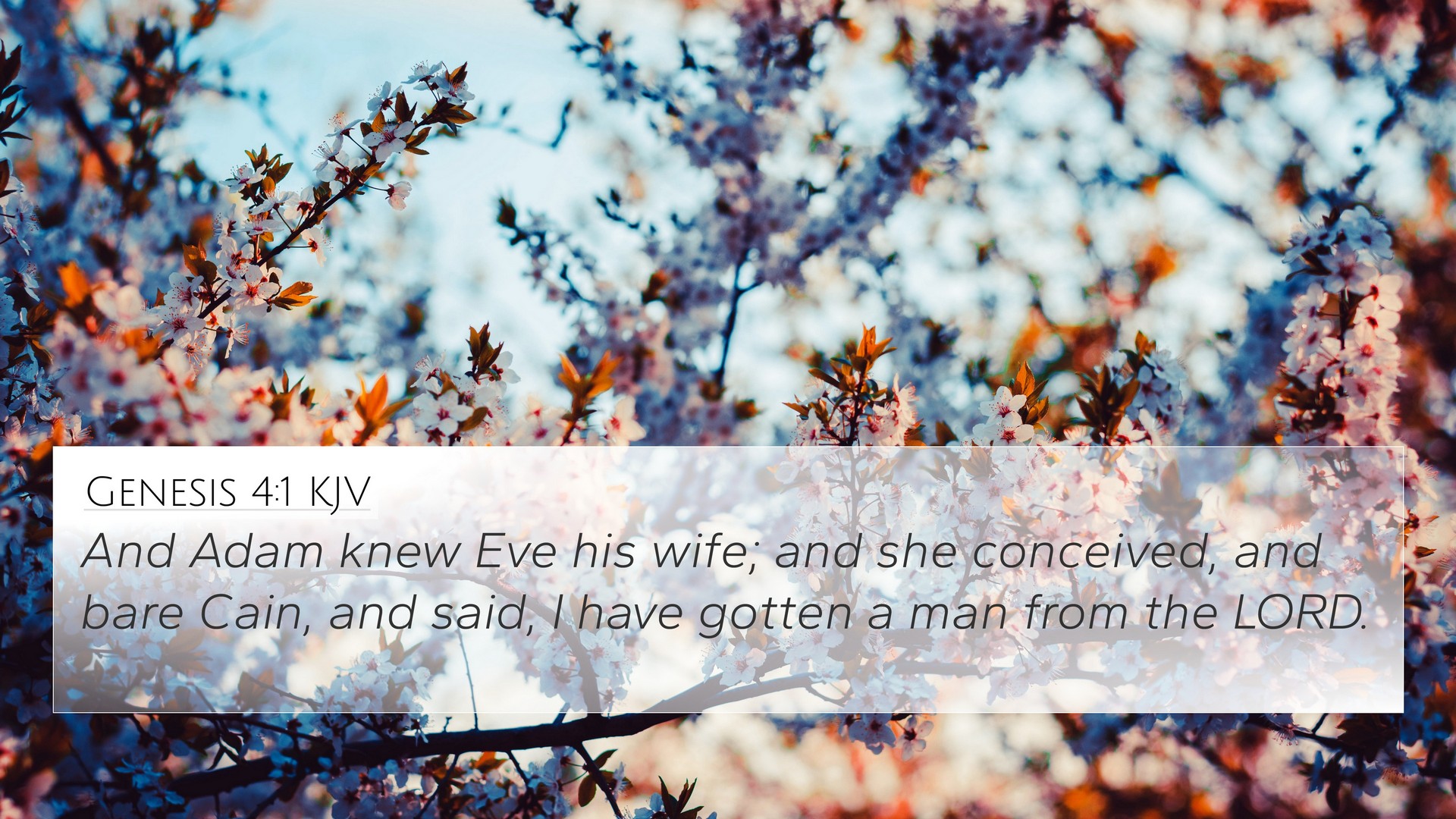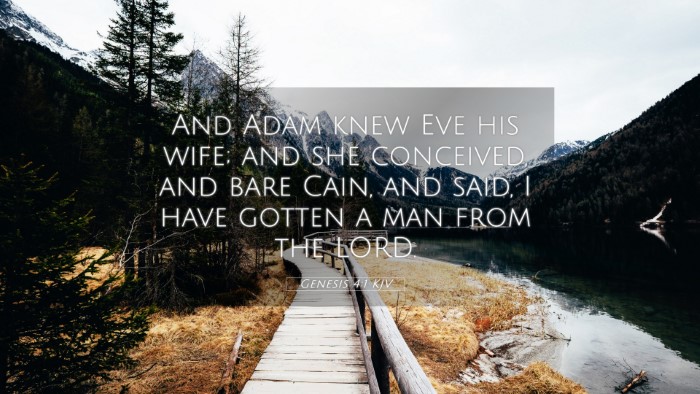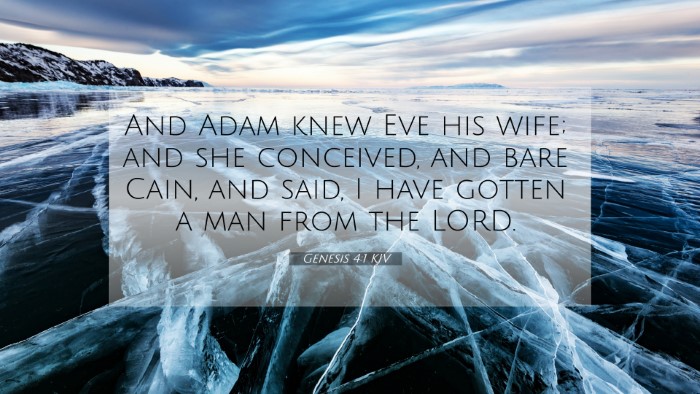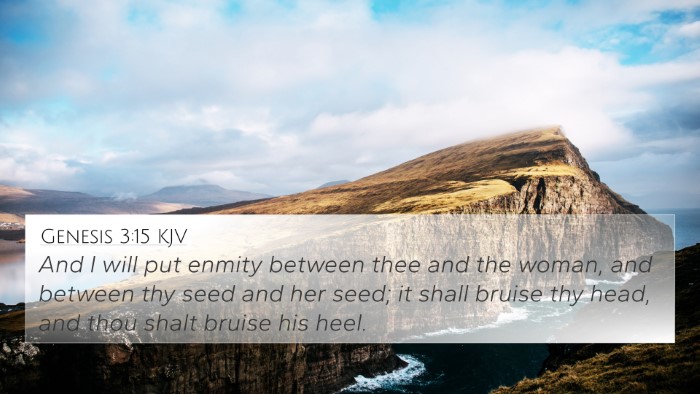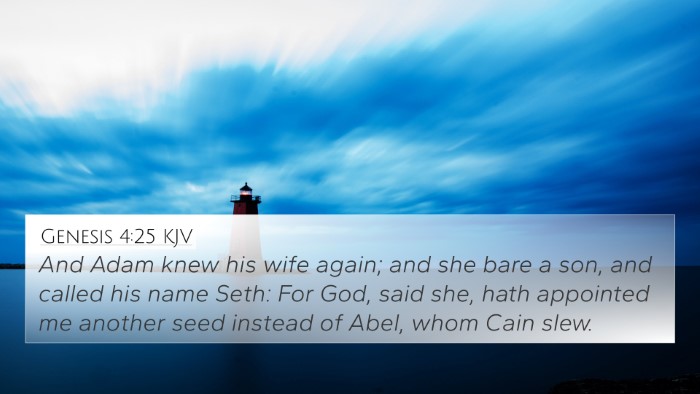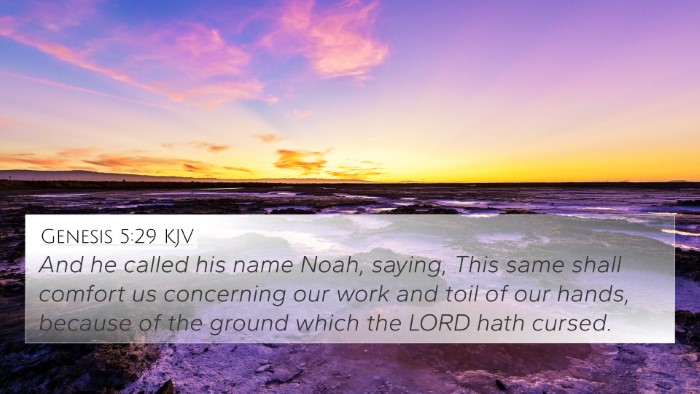Understanding Genesis 4:1
Genesis 4:1 states: "And Adam knew Eve his wife; and she conceived, and bare Cain, and said, I have gotten a man from the Lord." This verse introduces the birth of Cain, the firstborn son of Adam and Eve, marking a significant moment in Biblical history. The ensuing interpretations from public domain commentaries highlight various thematic elements and connections to other scriptural texts.
Commentary Insights
-
Matthew Henry:
Henry emphasizes the importance of the knowledge Adam had of Eve, which signifies intimate communion. He suggests that the phrase "knew" denotes a deep relational understanding. Eve's declaration upon giving birth reflects gratitude and recognition of God's sovereignty in the gift of life.
-
Albert Barnes:
Barnes addresses the literal and spiritual implications of Eve's statement. He highlights that Eve felt a direct connection to the Lord through the birth of Cain, believing that she had received a man from God. This implies a belief in God's direct involvement in human affairs and foreshadows further developments in human lineage.
-
Adam Clarke:
Clarke expands on the significance of names in the Biblical text. The name "Cain" itself, which means "acquired," symbolizes Eve's acknowledgment of God's provision. He also discusses the evolution of her understanding of childbirth as not merely a physical event but a spiritual one, marking Cain as part of God's creation and plan.
Key Themes and Cross-References
This verse can be connected to various themes in the Bible, particularly the nature of human relationships, divine involvement in creation, and the significance of names. Below are relevant cross-references that enrich the understanding of Genesis 4:1:
- Genesis 3:20: "And Adam called his wife's name Eve; because she was the mother of all living." This verse highlights Eve's foundational role in humanity.
- Genesis 1:27-28: "So God created man in his own image, in the image of God created he him; male and female created he them." This affirms human creation in God's image.
- Genesis 5:3: "And Adam lived an hundred and thirty years, and begat a son in his own likeness, and after his image; and called his name Seth." This emphasizes lineage and inheritance.
- 1 John 3:12: "Not as Cain, who was of that wicked one, and slew his brother." This references Cain's later actions and contrasts with the righteousness expected of God's creation.
- Romans 5:12: "Wherefore, as by one man sin entered into the world, and death by sin; and so death passed upon all men, for that all have sinned." This provides a theological backdrop to the consequences of Cain's lineage.
- Hebrews 11:4: "By faith Abel offered unto God a more excellent sacrifice than Cain, by which he obtained witness that he was righteous." This highlights the contrast between Cain and Abel, further defining their characters.
- Genesis 4:2: "And she again bare his brother Abel." This introduces Abel, further developing the familial dynamics that arise after Cain's birth.
Connections Between Bible Verses
The relationships established in Genesis 4:1 echo throughout the scriptures, revealing themes of creation, sin, and redemption. By exploring these connections, we can understand the unfolding narrative of humanity's journey and God's providential care.
Tools for Bible Cross-Referencing
To dive deeper into these themes, utilizing tools for Bible cross-referencing such as concordances or thematic Bibles can be invaluable. Such resources guide believers in finding connections between various passages, enhancing the study of Scripture.
Conclusion
Genesis 4:1 serves as a foundational verse that encapsulates the beginning of human family dynamics and divine involvement. Through careful study and cross-referencing, readers can gain profound insights into the connections between Biblical texts, enriching their understanding of theological themes. Such explorations exemplify the importance of inter-Biblical dialogue and help illuminate the comprehensive message of Scripture.
